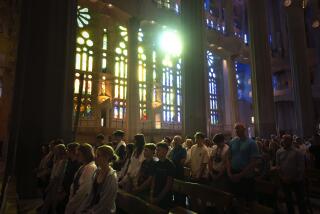‘Game of Thrones’ brought us to Spain. The small towns are what made us fall in love with it
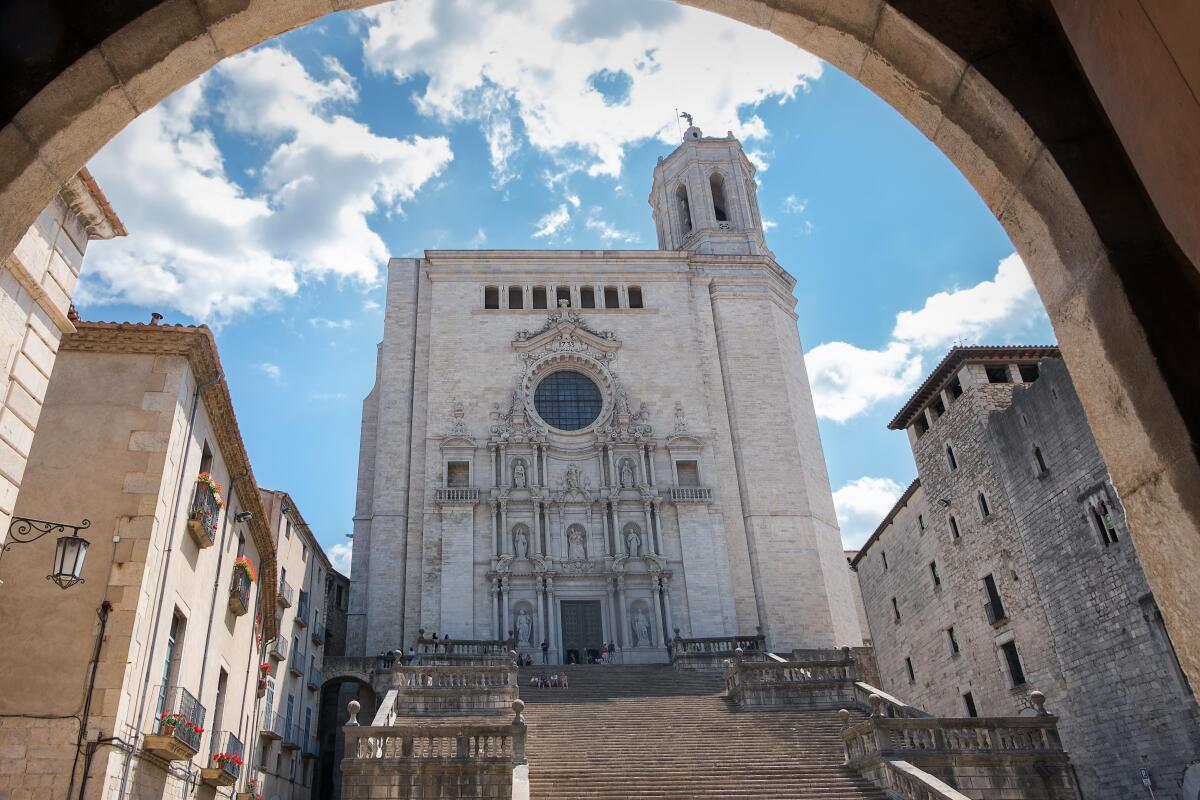
- Share via
BARCELONA, Spain — I wish I could say I had not brought my family to Girona, Spain, for a “Game of Thrones” tour.
On a summer Sunday morning, before morning Mass is over and many of the shops open, the ancient Spanish city is filled with a silence broken only by birdsong and the sound of bells.
The Onyar river, which separates the Old Town from the new, runs so clear you can count the fins on the fish as they swim. (At night, the fish jump, competing with swooping bats for the river’s insect life.)
The western bank is edged with houses, red and russet, yellow and gold. Beyond lies the Old Town, with its plazas and arches, towers and churches, cobblestoned streets, shadowy stairways and wild green gardens trying to prove real every romantic vision you ever had about historic Spain or Europe for that matter.
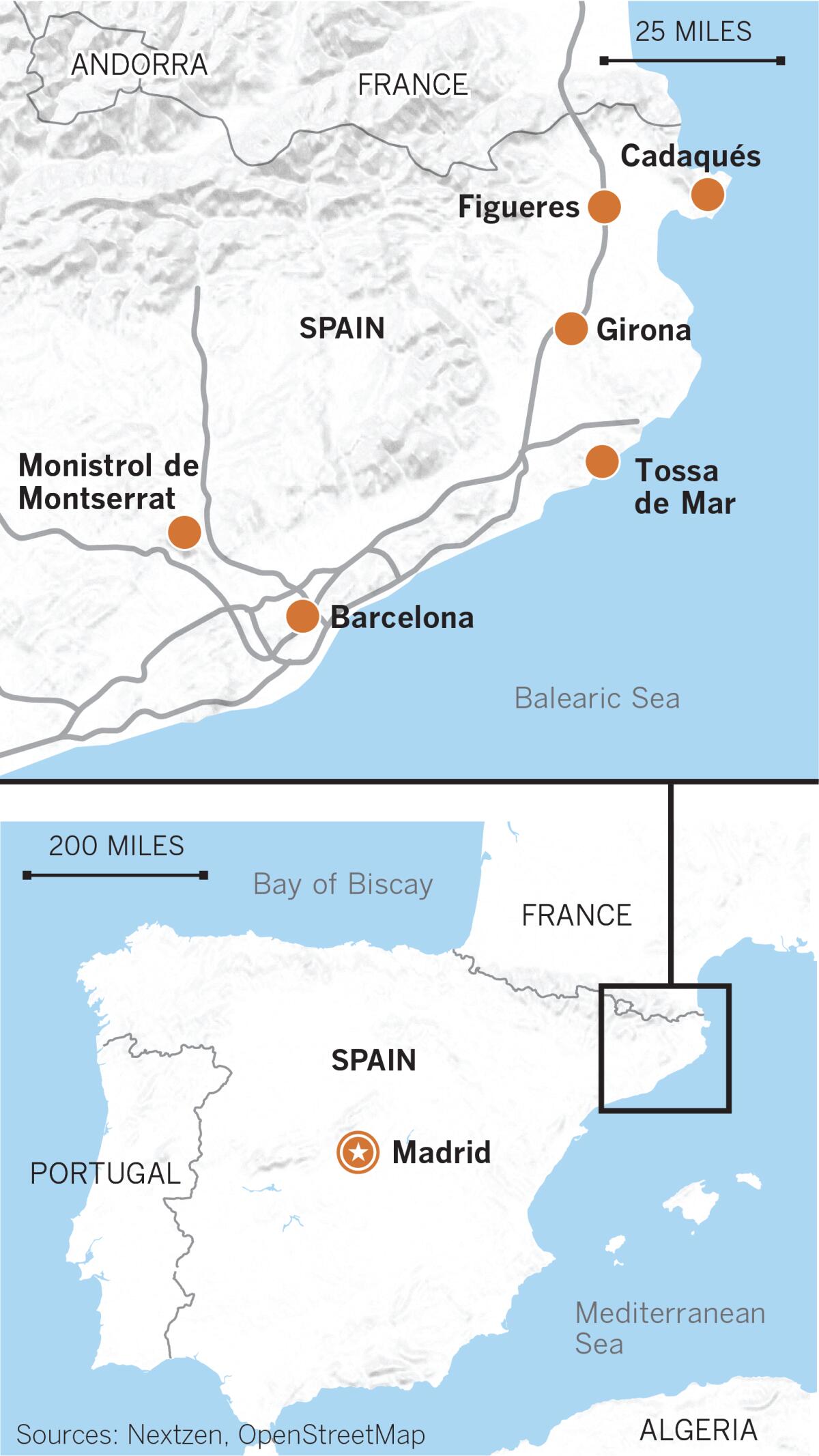
Some of that history is less than romantic but it’s all here. Parts of the Roman wall that remain from the first century. The medieval wall that was built on top of it and on which you can circle much of the Old Town. The 11th century cathedral, which has the widest Gothic nave in the world. The near-pristine 12th century Jewish quarter, from which a thriving community was driven in 1492. The Arab baths, a symbol of the town’s early Muslim inhabitants. The marks left on buildings by cannons from Napoleon’s army. The bridge built by Gustave Eiffel in 1876.
I wish I could say that all or any of this had drawn us to Girona but, dear reader, we came for “Game of Thrones,” which had its finale in May. If the tour had not been so darn good, I might feel ashamed. But it was, so I don’t.
We were in Barcelona for two weeks to see our son Danny, who was doing a summer semester/internship here. We fell in love with the city, for itself and as the ideal hub for day trips by train, car or professional tour.
They’re all ‘Game’
For our first weekend, I chose Girona over neighboring Figueres, with its Salvador Dalí museum, because it is where many scenes in “GOT’s” Season 6 six were filmed. We stayed overnight at the Hotel Peninsular, which was steps from the Onyar and has a terrific breakfast buffet.
Thanks to our guide, Carolina Oya of Girona Experience, we learned much about this historic jewel at the confluence of four rivers. We also saw, with our eyes and the aid of an iPad, where Jaime Lannister rode up the steps of the Sept; where Arya fought the Waif and fell into the computer-generated water; and where Sam and Gilly stood before entering the library of the Citadel.
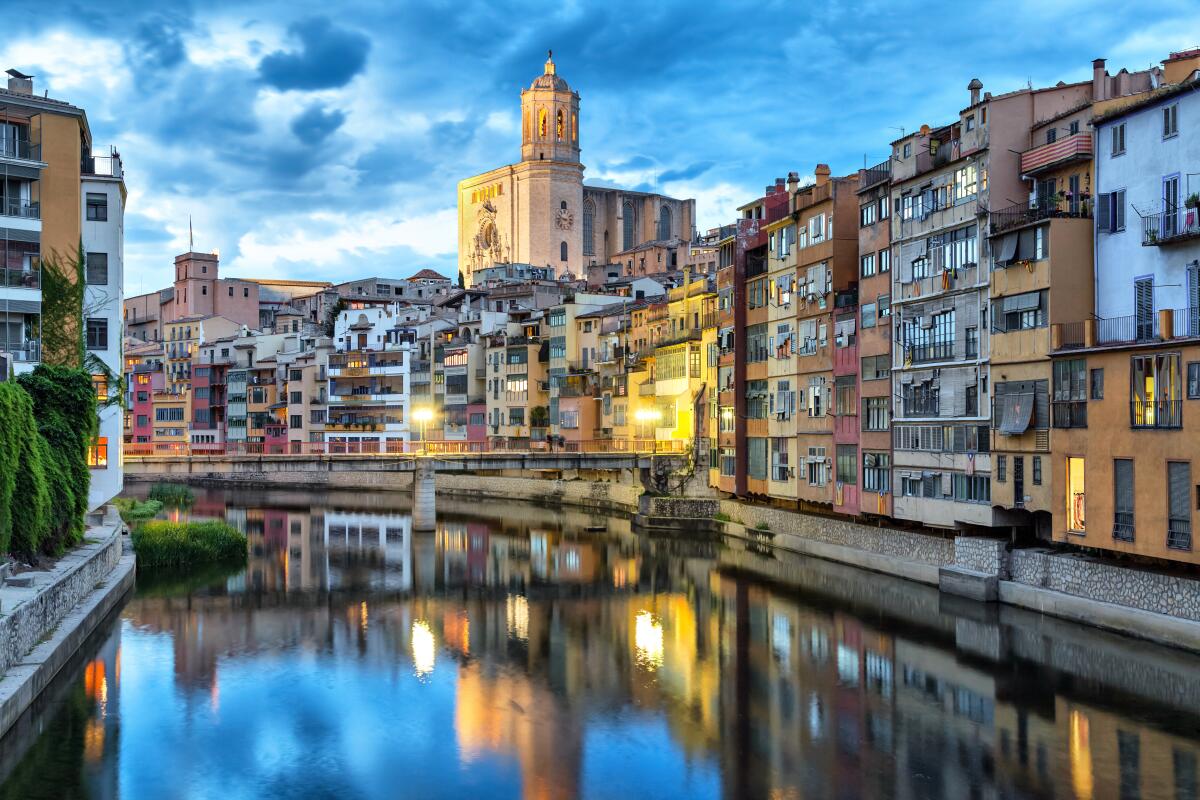
And we got the dish on what it was like for residents of a small Spanish town to become part of a worldwide television phenomenon. Amazing, said Oya, a Girona native. Old Town was shut down for weeks, and many citizens of Girona became extras. The resulting tourist boom made up for business lost during the shoot. Oya was able to quit her “boring” government job and become a tour guide just this year
Which doesn’t mean Girona has gone full-throttle Westeros. There are a few “Winter Is Coming” T-shirts in the shops but Girona still celebrates its own numerous attractions, which include a strange legend involving flies, a statue that one must touch to ensure a return, the town’s medieval walls with their glorious views and, perhaps most important, El Call, or Jewish Quarter.
Like many European cities, Girona is dominated by cathedrals and churches, but during the Middle Ages, its Jewish community was the second largest in the Catalonia area (after Barcelona).
Our tour took us through El Call, where beautiful homes were built around courtyards that usually contained a well. With their own water supply, families could close themselves off from any threat.
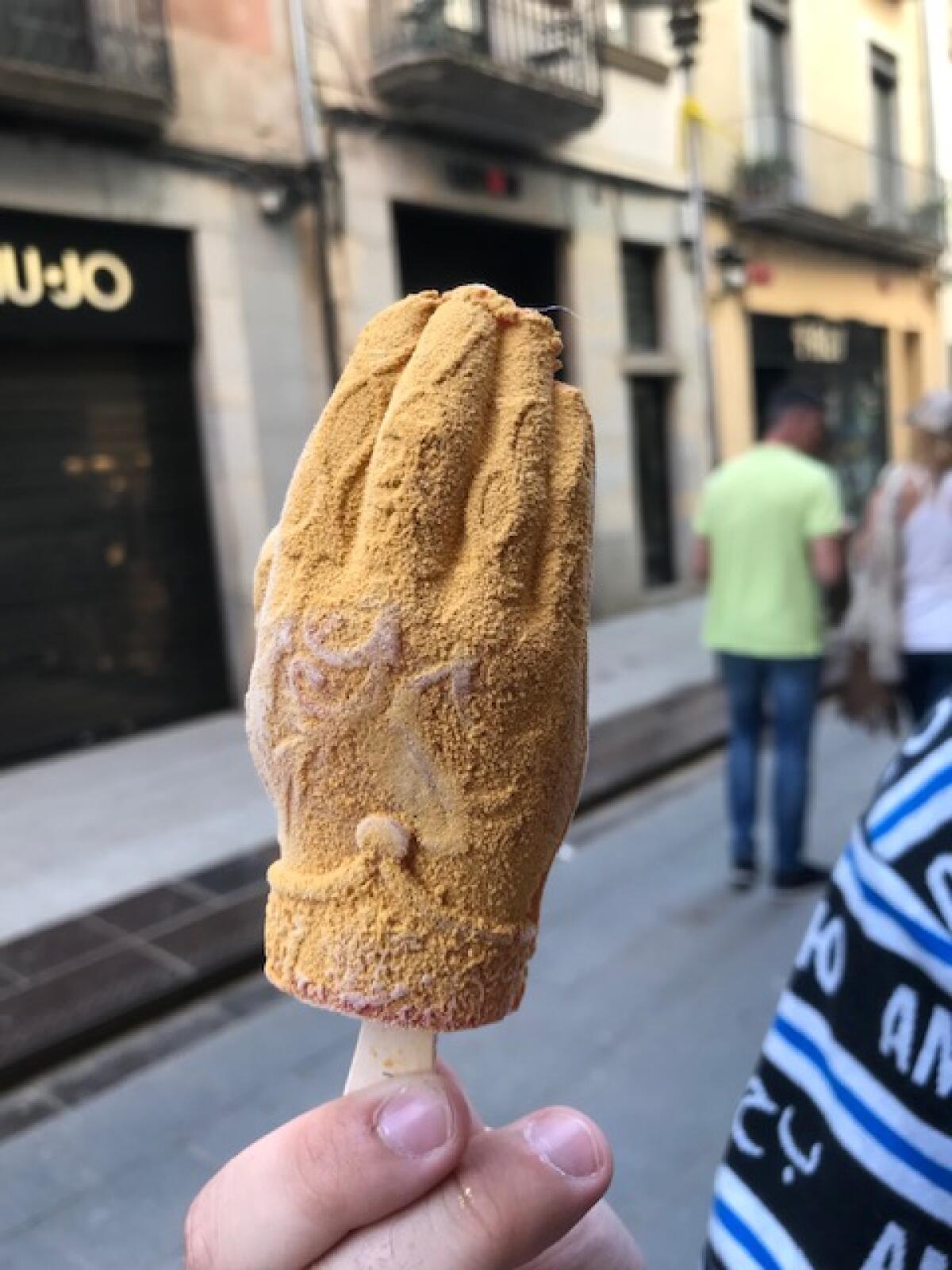
Ironically, anti-Semitism is the reason El Call is so well preserved. When the last Jewish families were expelled from Girona in 1492, they blocked off the streets in the hope they would return. Christians were reluctant to live in a Jewish neighborhood, choosing to build around and then over the houses.
El Call was buried and completely forgotten until the 1970s, when remnants of the famous rabbi Nachmanides’ yeshiva were discovered as one of buildings was being turned into a restaurant.
Now it is the heart of a city that looks like a fairy tale and reads like a history book. And, I feel obligated to add, where Arya finally outwitted the Waif.
Our tour ended at Rocambolesc, a famous gelateria with a truly amazing Hand of Jaime Lannister popsicle, and then we had to leave Girona. It was our final destination on a weekend road trip up the Costa Brava, and Danny had class on Monday morning.
Along the Costa Brava
You could spend several days exploring the towns along the Costa Brava, Spain’s spectacular northwest coastline. For our first weekend, however, we made stops at Tossa de Mar, where we admired the beach and then climbed up to its castlelike Vila Vella (Old Town), the remains of a 14th century fortified town that towers over the azure water.
On our way up, we encountered a lovely bronze statue of Ava Gardner. The 1951 film “Pandora and the Flying Dutchman,” in which she starred with James Mason, was filmed here. On our way back to our car, we stopped at Supermercat Pares for some of the best sandwiches in the world (many types of Spanish ham, but even the turkey is good) and headed for Cadaques.
Cadaques, a beautiful white-splash of a seaside town (where Dalí vacationed), is on a gorgeous and peaceful bay. It can be reached only by a mountain road with so many twists and turns that I had to lie in the sand for many minutes after driving it.
We didn’t have time to do much else besides paddle in the cool, calm water and wish we had not tried to jam so much into one day before leaving for Girona.
If we had it to do over again, we would have spent the night in Cadaqués and made Girona a separate two-day trip. It is only 45 minutes from Barcelona by train, but I would recommend spending the night because there is so much to see.
For our second weekend, we made a trip to Monistrol de Montserrat, where a Benedictine abbey, nestled among mountains of unearthly beauty, houses one of the few black madonnas in Europe.
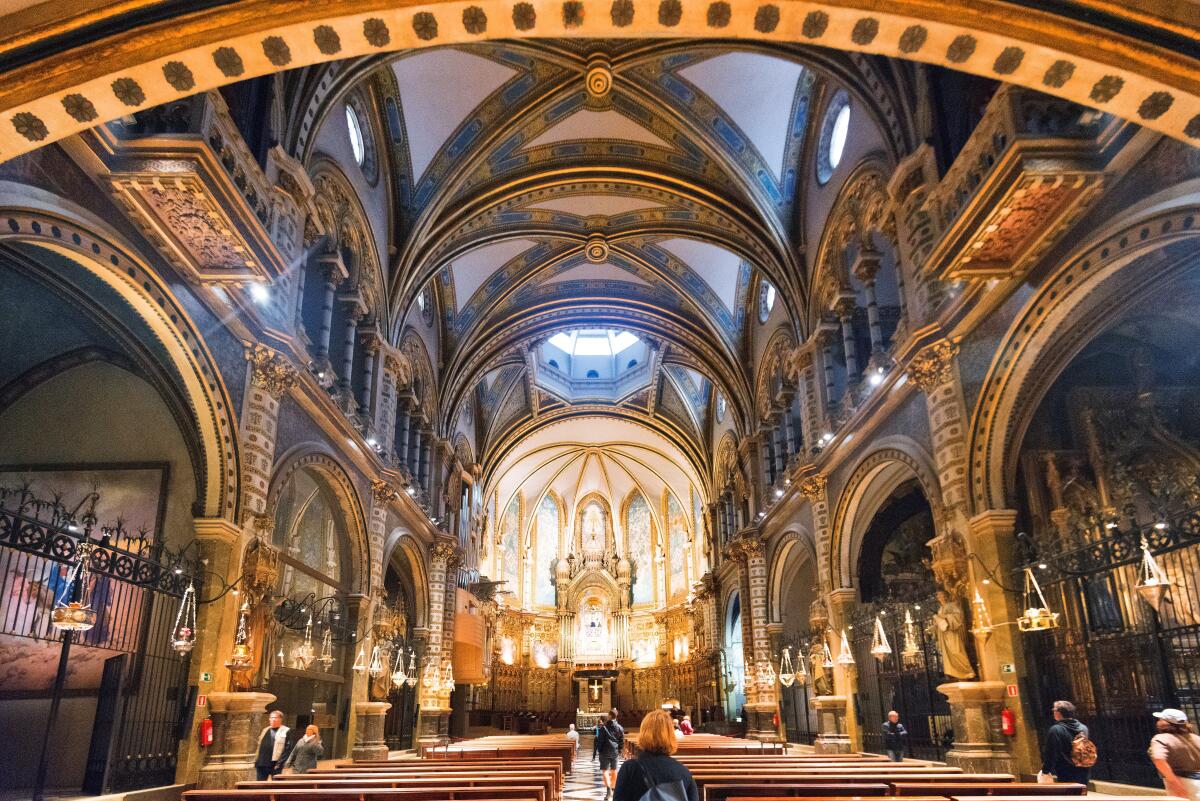
Getting there is half the fun: From Barcelona’s Espanya station, ticket packages include a train to either a cable car or a rack railroad up to the monastery. It takes well over an hour, and you’ll want to spend as much time as possible in Montserrat walking the trails and visiting the grottos, art museum, monastery and Basilica.
Montserrat means “saw mountains,” which does little justice to the rock formations that rise pink and gray like smooth fingers and thumbs, cradling the Santa Maria de Montserrat Abbey (as well as several hotels, restaurants, gift shops and an art museum) as if in the hands of God.
The monastery is not old by area standards; it was founded in the 11th century but was rebuilt in the 19th, about the same time the Basilica was finished. It is an unearthly place; even with the hotels and tour buses, ancient forces make themselves felt — and not just to the faithful.
According to legend, which was first recorded in the 13th century, Monserrat’s black madonna, or La Moreneta, was found sometime in the 8th century when shepherds saw a great light, accompanied by singing, coming from the mouth of a cave. When they gathered the courage to investigate, they found a 3-foot-high wooden and gilt statue of Mary, holding an orb in her right hand and a young Jesus on her lap.
It may have been carved in Jerusalem before making its way to Spain to be hidden during the Moorish invasions but, as the story goes, attempts to remove her from Montserrat were thwarted. In one version, the farther away she got, the heavier she became. And so she stayed on the mountain, answering prayers, healing the infirm and attracting pilgrims and tourists.

Which means, of course, there’s a line to see her. But it’s a pretty good line as lines go, wending through a side entrance to the Basilica, past a procession of side altars and up a staircase lined by female saints (virgin saints on one side, married saints the other).
Our Lady stands behind the main altar, in a plexiglass box, through which the orb extends to be touched in prayer. A guard stands by to ensure those prayers are short and the line keeps moving.
Like any Mary raised Catholic, I have an extensive prayers-to-our-Blessed-Mother playlist, but on this day, I was feeling more sociopolitical than spiritual. The actual mother of Jesus was no doubt some shade of brown, yet pretty much every one of the approximately 2,700,016 madonnas I have seen are lily white.
Yes, the ebony hue of La Moreneta may be due to age rather than intention, but I was thrilled by the prospect of a Mary and Jesus who looked, gilt robes and crowns aside, a bit more historically accurate.
But when I raised my phone to take her picture, something in her gaze stopped me. Depictions of Mary are often joyful, sorrowful or vaguely middle-distance serene. But this one was … different, and not just in hue.
In her long, dark face was patience and expectation and, in the gentle, almost humorous curve her mouth, knowledge. It was as if her wide-open eyes saw something specific, something inevitable, something worth waiting for.
All those centuries of pilgrims and even the legends made perfect sense — this madonna would go nowhere she did not want to go.
I was so moved that I did something I have never done — I bought a replica, which are, as you can imagine, available in every size. I do not see in my version what I saw in the original, but it will serve as a reminder of a place both of and out of this world.
If you go
THE BEST WAY TO BARCELONA, SPAIN
From LAX, Norwegian flies nonstop to Barcelona, and Air Canada, American, United, Delta, KLM, Air France, Lufthansa, Swiss and Iberia offer connecting service (change of planes). Restricted round-trip airfare from $617, including taxes and fees.
WHERE TO STAY
Hotel Peninsular, 6 Avinguda de Sant Francesc, Girona, Spain. Doubles from $94.
Casa Cundaro, 7 Pujada de la Catedral, Girona, Spain. Doubles from $65.
Hotel Abat Cisneros, Monestir de Montserrat, Montserrat, Spain. Doubles from $131.
WHERE TO EAT
Café Le Bistrot, 4 Pujada de Sant Domènec, Girona, Spain. Dinner entrees from $9.
Bau Bar, 8 Placa de la Catedral, Girona, Spain. Dinner entrees from $17.
Bar de la Placa, Placa de L’abat Oliba, Montserrat, Spain. We had a nice if a bit expensive meal at Bar de le Placa. There is a cafeteria as well.
More to Read
Sign up for The Wild
We’ll help you find the best places to hike, bike and run, as well as the perfect silent spots for meditation and yoga.
You may occasionally receive promotional content from the Los Angeles Times.
